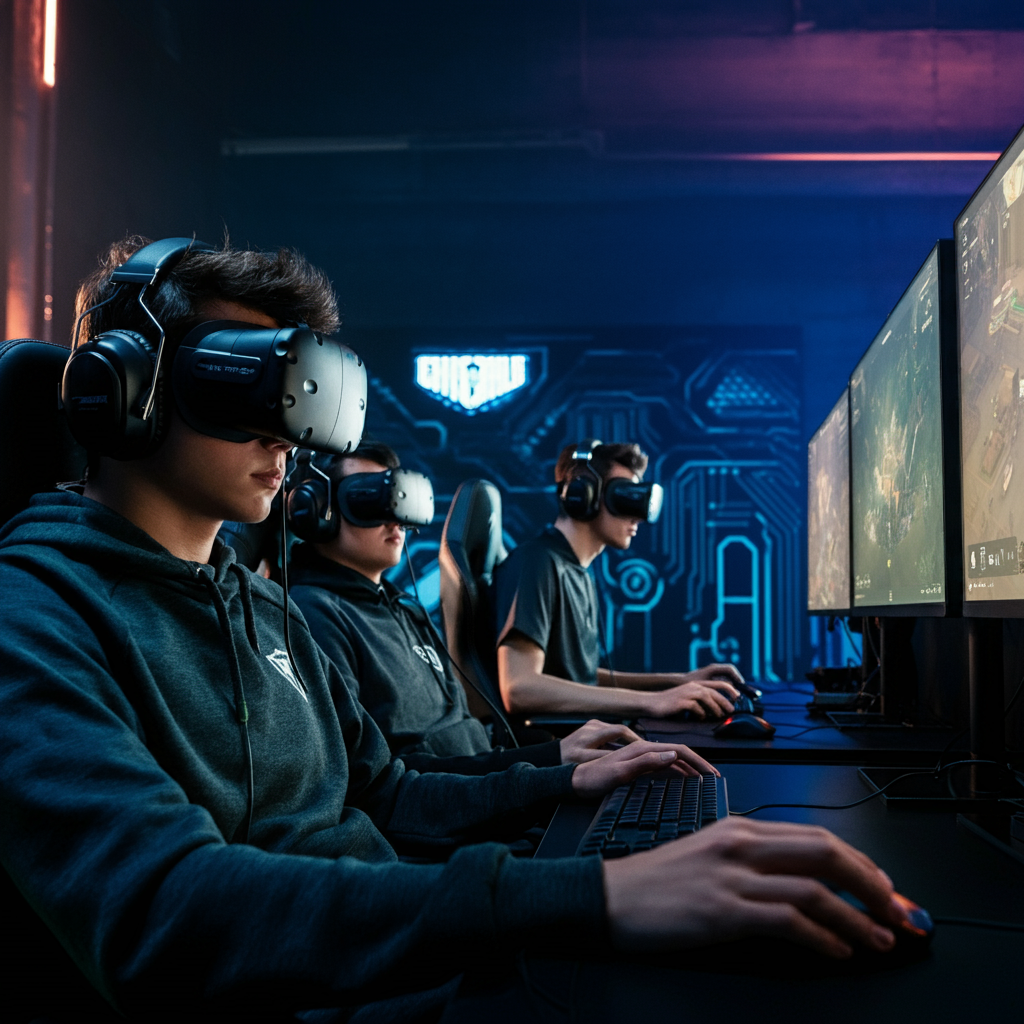Virtual reality (VR) is making significant strides in the training regimens of professional gamers, offering new ways to enhance skill development and strategy optimization. By providing immersive and interactive training environments, VR is revolutionizing how professional gamers prepare for competitive play, enabling them to refine their skills and strategies in ways that were previously unattainable.
One of the primary ways VR enhances training is through its ability to create highly realistic and controlled practice scenarios. In traditional gaming setups, players often practice in a static environment, which can limit their ability to adapt to dynamic in-game situations. VR, however, allows gamers to engage in lifelike simulations that mimic real-world conditions. This means that professional gamers can practice their reactions, strategies, and decision-making skills in a more authentic and immersive context. The ability to physically move and interact within a virtual space provides a deeper level of engagement and realism, which is crucial for honing complex skills.
Additionally, VR training tools offer detailed analytics and performance tracking that are essential for improving gameplay. Advanced VR systems can record and analyze player movements, actions, and responses in real time. This data is invaluable for identifying strengths and weaknesses, allowing gamers to focus on specific areas of improvement. For instance, VR can track how effectively a player navigates a virtual environment, how quickly they react to in-game events, and how accurately they perform various actions. This level of detailed feedback enables professional gamers to fine-tune their skills and develop more effective strategies.
The immersive nature of VR also facilitates better teamwork and communication training for team-based games. Professional teams can use VR to simulate complex team scenarios and practice coordination in a virtual environment. This not only helps players to understand their roles and responsibilities within the team but also improves their ability to communicate and collaborate effectively. The ability to interact in a shared virtual space enhances the realism of team-based training and helps build stronger team dynamics.
Furthermore, VR provides opportunities for training in environments that are difficult to replicate in traditional setups. For example, VR can simulate different game maps, scenarios, and conditions that players may encounter in actual competitions. This allows professional gamers to familiarize themselves with various in-game environments and develop strategies for handling diverse situations. By practicing in these simulated environments, gamers can be better prepared for the unpredictability of live matches.
The adaptability of VR training tools also means that they can be customized to fit the specific needs of different games and players. Whether it’s a fast-paced shooter or a strategy-based game, VR training systems can be tailored to address the unique challenges of each genre. This customization ensures that professional gamers receive targeted training that is relevant to their specific competitive focus.
In summary, VR is significantly enhancing the training regimens of professional gamers by providing immersive, realistic, and data-driven practice environments. The ability to simulate real-world scenarios, track performance metrics, and customize training experiences offers a new level of precision and effectiveness. As VR technology continues to advance, its role in professional gaming training is likely to expand, offering even more innovative ways to prepare for competitive success.

